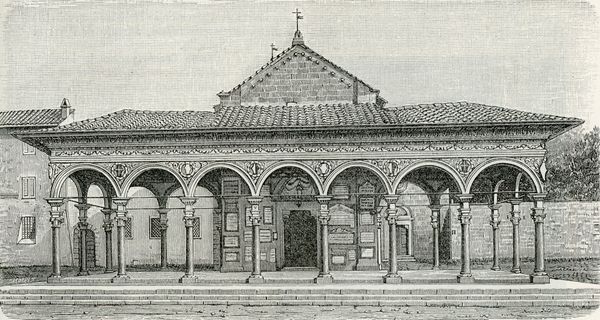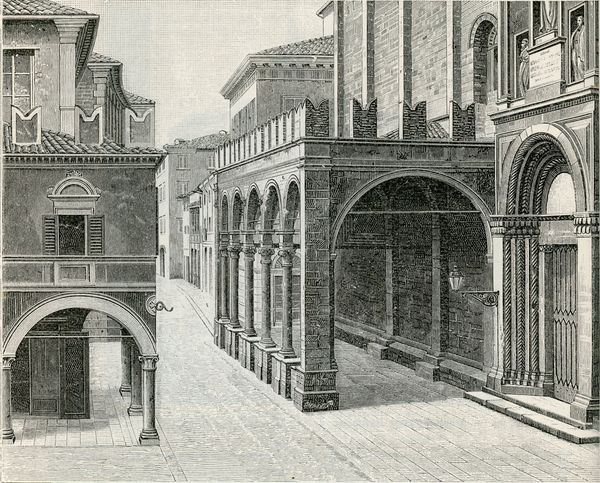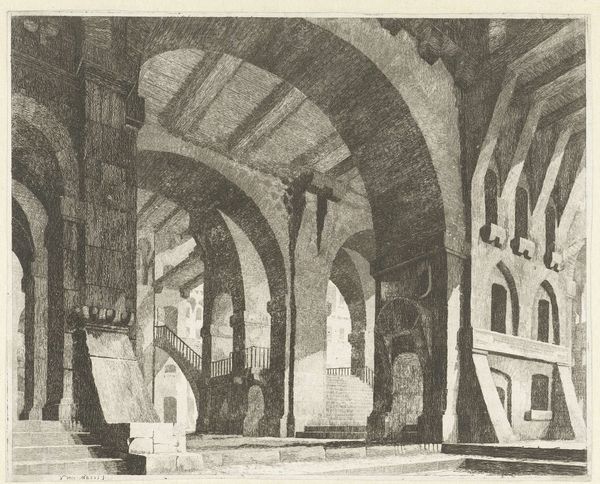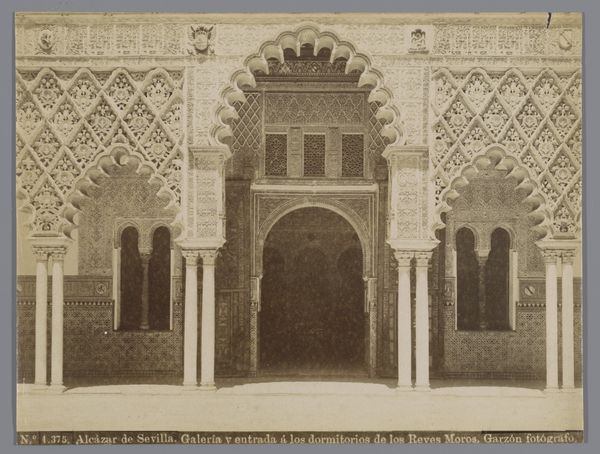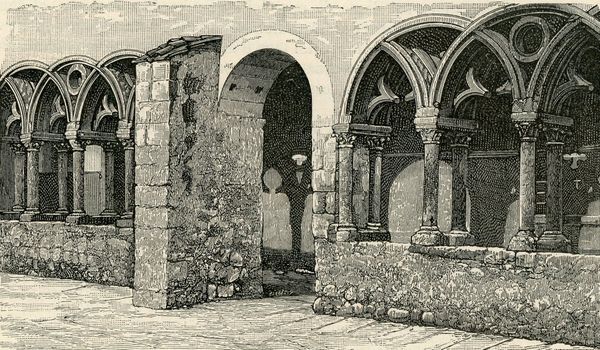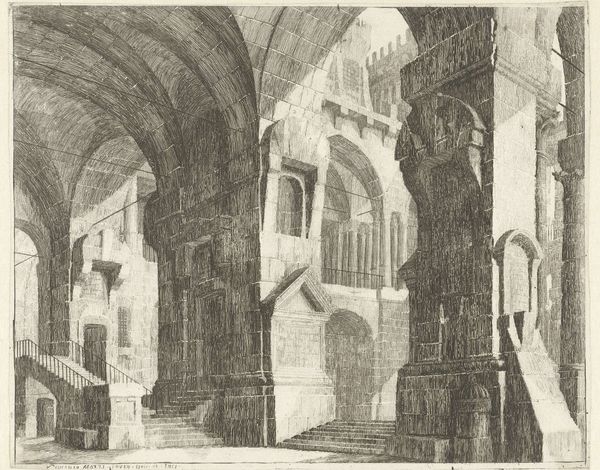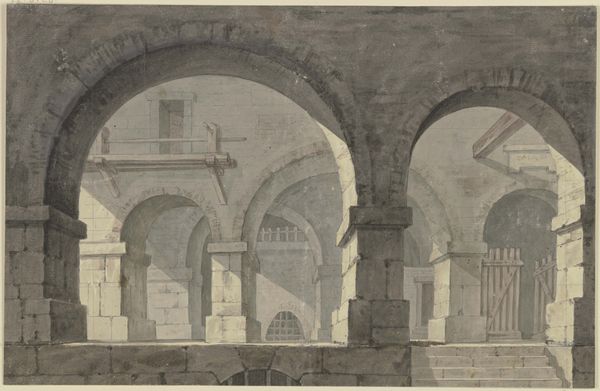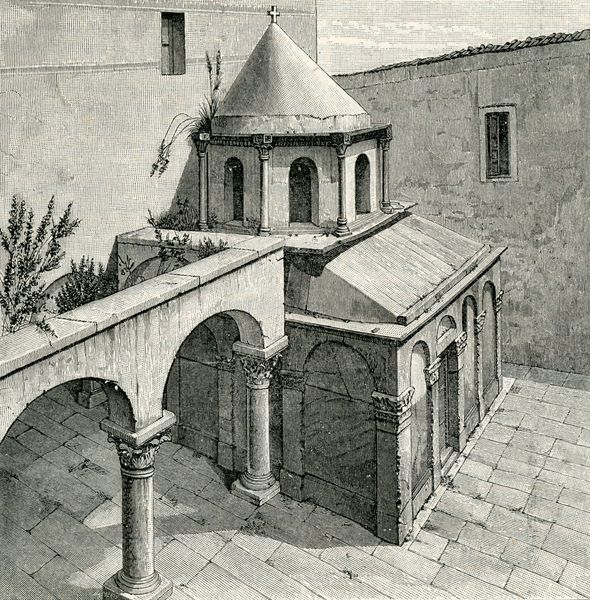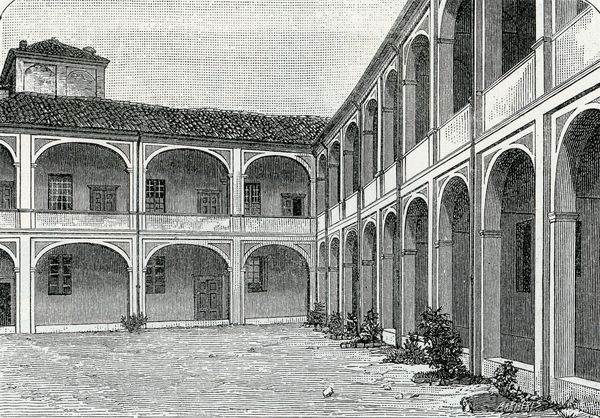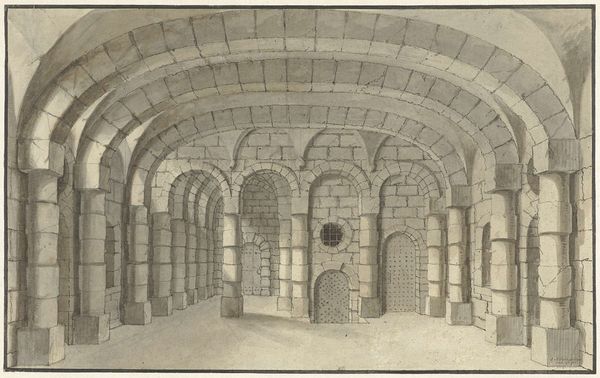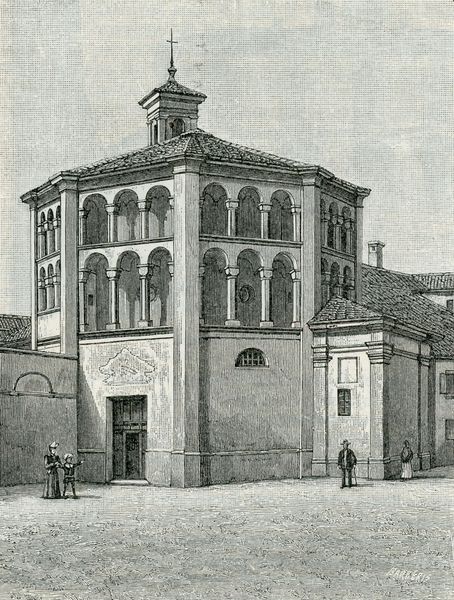
drawing, print, engraving, architecture
#
drawing
# print
#
classical-realism
#
historic architecture
#
architectural drawing
#
cityscape
#
engraving
#
architecture
#
statue
Copyright: Public domain
Editor: So, here we have "Il Cortile Detto Di Pilato", an engraving by Giuseppe Barberis from 1900. I'm really struck by the intricate detail he achieved. It’s so precise and… well, ancient feeling. What do you make of it? Curator: It is a compelling depiction. Consider how Barberis, working in 1900, chose to represent this architectural space through the exacting medium of engraving. He isn't just showing us a courtyard, but a statement about the cultural importance of historical sites, wouldn't you agree? Editor: That makes sense! It’s like he’s elevating architecture itself to the status of fine art through this detailed rendering. Do you think the title adds another layer of meaning? Referencing Pontius Pilate… Curator: Precisely! "Il Cortile Detto Di Pilato", or “The Courtyard Called of Pilate”, brings historical and religious connotations into play. The very act of labeling it as such transforms a physical place into a site of historical and perhaps political reflection. Editor: It’s fascinating how the choice of subject and the meticulous style reinforce this sense of importance. You get a feeling that architectural preservation or maybe some form of restoration or reflection is important to the artist, perhaps of the period generally. Curator: Yes. And notice how the high level of detail suggests that this is a site of learning or memory. Is the courtyard meant to inspire reflection or maybe provoke feelings of grandiosity, what role should the architecture be for the common person in its period? Editor: I see that, and it highlights how art and architecture intertwine to shape our understanding of the past and our place within a broader historical narrative. Curator: Indeed. Thank you, it made me consider again what art truly makes us learn.
Comments
No comments
Be the first to comment and join the conversation on the ultimate creative platform.
